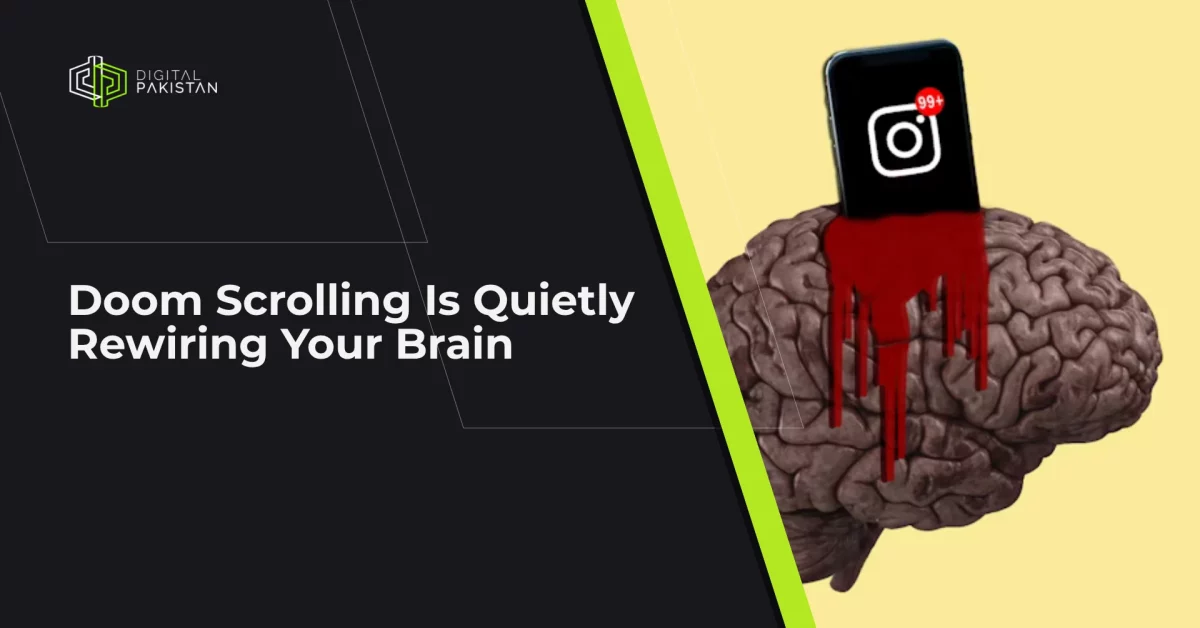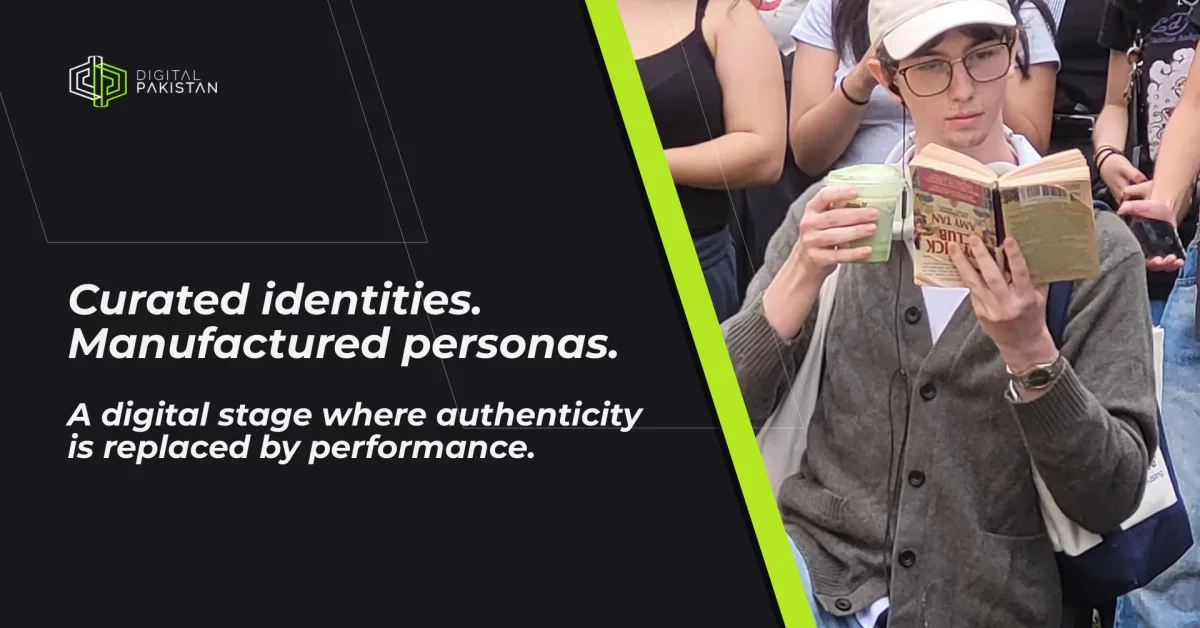
Pakistan Strengthens Economic Ties Through Washington Visit
October 14, 2025
PPL Partners with Turkey for Offshore Exploration
October 15, 2025Doom Scroll and Decay of the Brain
Introduction: The 2024 Word of the Year
By now you must be aware that Oxford University Press’s Word of the Year for 2024 was “Brain rot”. This new-fangled coinage is not a medical diagnosis. Instead, it demonstrates a social and digital phenomenon. Whereby social media users spiral, for long periods, into doom scrolling, only to feel psychologically drained afterwards.
With the rise of short form content, such as Instagram, TikTok and YouTube reels, the average time each user spends on digital platforms has risen exponentially. The content, however low-quality and trivial it may be, is designed to hook individuals for about 60 secs per video, which is more than enough to hurl anyone down the rabbit hole of hours of doom scrolling.
The content is fast, cheap, methodically and algorithmically curated. Remaining chronically online enslaves into oblivion, until they lose track of time. Informational overload consequentially, and insidiously, sponsors emotional and cognitive fatigue, known as brain rot.
Digital overconsumption takes on similar effects to that of an addictive substance designed to generate frequent dopamine hits. With each scroll cycle, the content gets harder to resist. Users require the dopamine hits in larger quantities.
Ultimately, when they are not engaging with it, they feel a physical and psychological need to resort to maladaptive behavioral patterns. Developing this particular dependency on digital overconsumption is what triggers and maintains the slow decay of the brain.
The Tale of Algorithmic Overconsumption
Our lives are powered by algorithms; we’re functioning on a diet of digital content. Everything, from our thought frameworks to our needs, desires, and conception of reality, is dominated by the information circulating online on our “for you” pages.
What is “for you” is governed by algorithms tracking the type of content you like, revisit, repost, and generally engage with. These algorithms know more about you as a person than what you know about yourself.
Overconsumption is the fodder that keeps social media platforms in business, even when it comes at the cost of a colossal collapse of society, culture and human species at large. Seeing what you want to see, in unregulated and uncontested abundance, reconfigures the way you think, behave, analyze information, talk, feel and conduct yourself in the world.
It is one of the many reasons behind the extensive polarization of society, as extreme views are constantly reassured and reinforced. Algorithms rope us in and dictate our psychological parameters. Thus, causing anxiety, the fear of missing out, addiction and withdrawal, dissociation and confusion, sleeplessness and an overall passive, sedentary lifestyle.
Cognitive Decline in Slow Motion
When people talk about brain rot, they normally describe it as low-quality memes, senseless and awkward new slang, and other such vapid, uninspiring things floating around on social media. Fast-paced, unchallenging content serves no real purpose other than providing vacuous and ludicrous stimulation. It dulls the senses, initiating a slow-motion cognitive and physical decline.
However, it is more multilayered than that. Brain rot occurs commonly in individuals who’re glued to the screens – which is the case with nearly everybody these days – gradually desensitizing them to the world in a bid to attain quick and easy stimulation from flashing pixels. You want to stop, but you can’t help do another scroll. Then another, then another, until eternity.
The first signs of excessive exposure to brain rotting content almost always include: an inability to concentrate on any task for longer periods, memory impairment, diminished critical thought and related cognitive process, mental and emotional fatigue. Additionally, loneliness, melancholy, mood lability and confusion are among the symptoms precipitated by brain rot.
Physiological symptoms often consist of: lethargy, abnormal posture, sleep deprivation, agitation, musculoskeletal pains, and increased stress in the body. From a neurological standpoint, the dysregulation of the neurotransmitter, Dopamine – associated with motor function, pleasure, reward and motivation – creates heightened dependency on digital consumption.
Your mind and body are less responsive to organic rewards, dethroned by screens as your sole source of pleasure. Ultimately, this induces mood dysregulation, negative self-perception, restlessness, brain fog, et cetera. We’re quite willingly breaking down and restructuring our brain’s architecture to think, feel and perform less in all capacities.
A Retrospective
Do you recall the days when you had so much time on your hands that you didn’t know what to with it? It wasn’t that we had limited choices in which to invest the luxury of spare time. Rather, it was the fact that stimulation and entertainment was earned via engaging in meaningful, interesting, and creative ways. We experienced the wholeness of actually living in the world in real-time.
Being bored or drained from practical, mundane pursuits, meant people gathered up their friends and family for boardgame parties, movie nights, road trips, sports, recreational adventures, and the likes. Even in solitude, picking up a good book, learning new hobbies, and actively seeking out healthy and purposeful distractions, sufficed.
The quality of these distractions challenged us cognitively and physically, in ways that were exciting, refreshing and beneficial. Our childhoods, adolescent years and adult lives were not wasted away sinking into a couch, isolated into oblivion, devoured and dissolved by a false pixilated reality.
Ironically, the further we step into the disorienting ways of this digitized and automated world, our longing for bygone eras deepens. Most of regular social media users, who were born in the late 90s and early 2000s, report experiencing nostalgia for the past in order to acquire some sense of belonging and inspiration. And to remember what it was like to be truly alive in our body and mind.
While humans are evolving in a technological and innovative way, something seems amiss. Originality is severely compromised and the things designed to fascinate us aren’t living up to the promise. Pleasure and excitement is shallow and fleeting; inauthenticity is rewarded, as individualistic style and human-driven talents is superseded by vast infiltration of artificiality.
Conclusion
It’s the appropriate moment to inquire, “What does this mean for the future of human consciousness?” How are we supposed to preserve our humanity if our brains – the organ responsible for establishing and securing our identities, personalities, and uniqueness – is putrescent? To reference the work of Japanese novelist, Osamu Dazai, are we no longer human?
The future is uncertain. There are days when it appears that we’ve dug a hole so cavernous we won’t be able to rescue ourselves from this foreshadowed apocalyptic end. Contrarily, we hope that humans awaken to the knowledge of what is happening to them at a visceral level and fight to alter the state of enslavement we are presently undergoing.
Brain rot is a phenomenon which adequately illustrates a kind of internal vacuum that is remolding our species into subdued, tractable, hollow creatures. A creature that bears an outward semblance to human, but doesn’t contain the characteristics of one any more. Behind the empty, distant gaze, the structure of cognition and consciousness reeks of atrophy.





